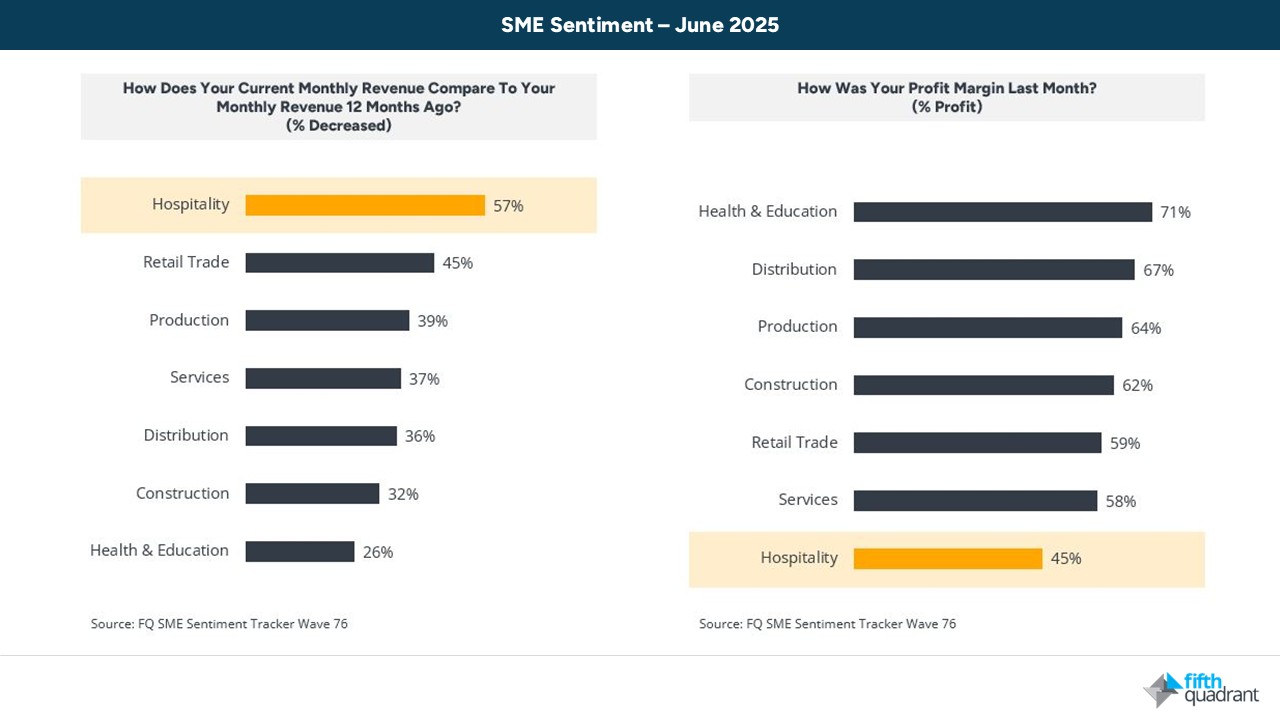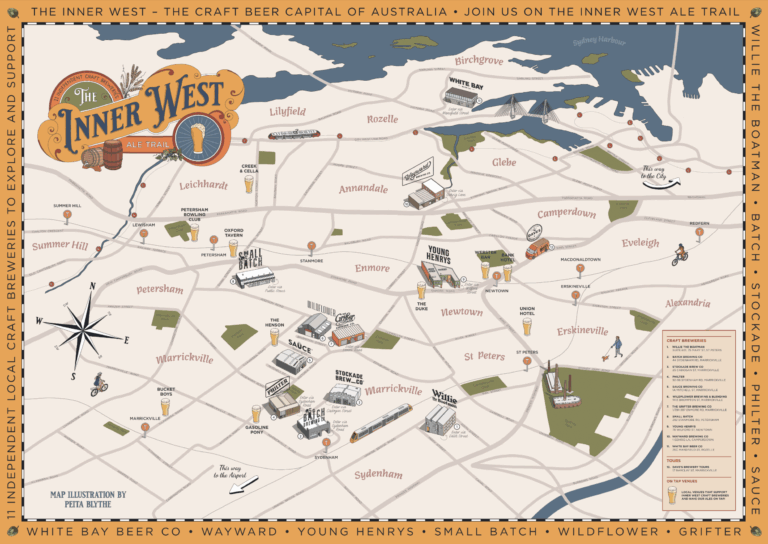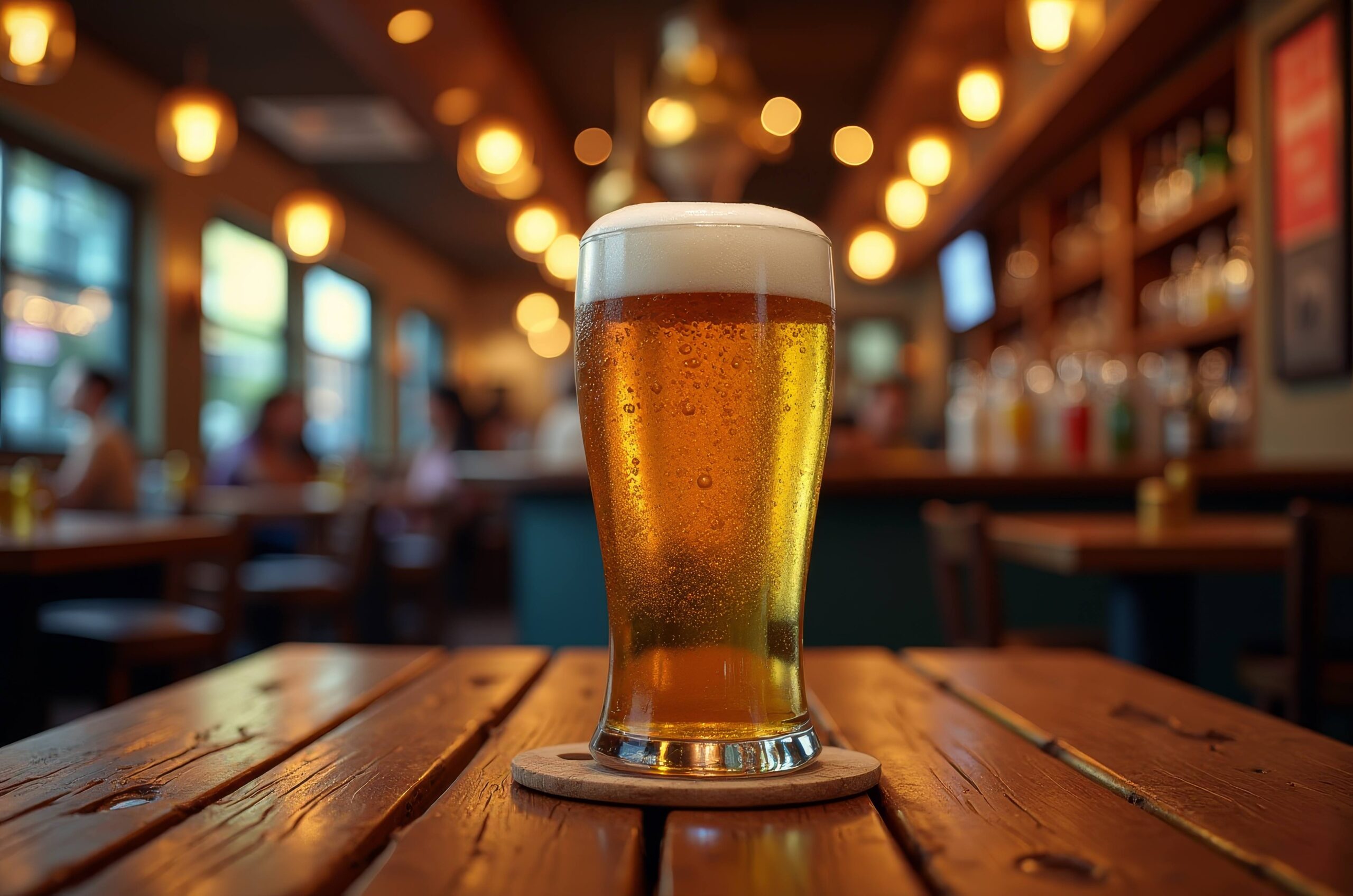Author: Mel Borg | Posted On: 24 Jul 2025
Australia’s hospitality sector is doing it tough. In the June wave of Fifth Quadrant’s SME Sentiment Tracker, 57% of hospitality businesses reported a decline in revenue over the last 12 months, and only 45% reported profit, the lowest of any sector. Despite this, one unlikely pocket of resilience is bucking the trend: independent breweries. They are expanding operations, increasing revenue, and hiring more staff to manage increased demand (IBISWorld 2025).

Tapping Into a Nation of Beer Lovers
Despite changing consumer preferences and rising prices, Australia’s love affair with beer lives on. Beer consumption per capita has been falling since the early 2000s, while craft beer’s market share has climbed from 17% in 2019–20 to 21% in 2024–25 (IBISWorld 2025).
Rather than compete head-to-head with major brewers like Asahi or Lion, who together still control 60% of the market, independent breweries are playing to consumer preferences and betting on experience over scale. Enter the brewpub. A direct-to-consumer model that leans into localism and offers health and cost-conscious consumers more than just your average schooner.
Breweries as Community Hubs
By adopting the “brewpub” approach, where they own the space where the beer is brewed, served, and enjoyed; breweries are offering consumers an experience that blends product transparency with local culture. These venues are no longer just a place to have a pint, but community hubs offering authenticity and connection.
Sydney’s Inner West, home to the Inner West Ale Trail consisting of eighteen independent breweries, offers a compelling case study. Young Henry’s is a keen supporter of live music and the arts, while Philter built its venue in an old yogurt factory as an ode to the industrial history of Marrickville, the suburb where its located. Meanwhile Hawke’s Brewing tapped into the Aussie zeitgeist, naming their brand after ex-Prime Minister Bob Hawke, who is founders’ answer to the question “who would you most like to have a beer with?”
For these breweries, the venue is part of the value proposition. Consumers aren’t just buying a drink, they’re buying into the space, the story, and the neighbourhood; which is something they are willing to pay for.

Community Drives Resilience
The brewpub model is building resilience for breweries even as broader hospitality metrics decline. By reducing reliance on wholesale channels and providing greater control over margins and pricing, they also benefit from:
• Higher customer retention through hyper-local engagement
• Product innovation tailored to their community
• Brand identity that feels personal, not corporate
Brewpubs as the New Pub Test
It might be a coincidence that Prime Minister Anthony Albanese’s electorate sits right in the middle of the Inner West Ale Trail, but it begs the question – is the brewpub the new pub test?
The traditional Aussie “pub test”, which is the idea of gauging public opinion over a schooner at the local, might make more sense to be tested in a Marrickville taproom. If these breweries are the new “third spaces” they may better reflect community attitudes and values.
What This Means for Business Strategy
Independent breweries aren’t just thriving because they sell good beer; they’re outperforming because they are offering more than a product. The lesson here is that hospitality operators need to reimagine what customers want from their experiences and adapt in kind to meet new expectations.
For hospitality groups, retailers, and even property developers, the message is clear: authenticity scales, and experiences grounded in community have a competitive edge.
How is your business anticipating and responding to fundamental shifts in consumer behaviour?
Contact us to understand what’s really driving change in your industry.
Posted in Uncategorized, B2B, Consumer & Retail

